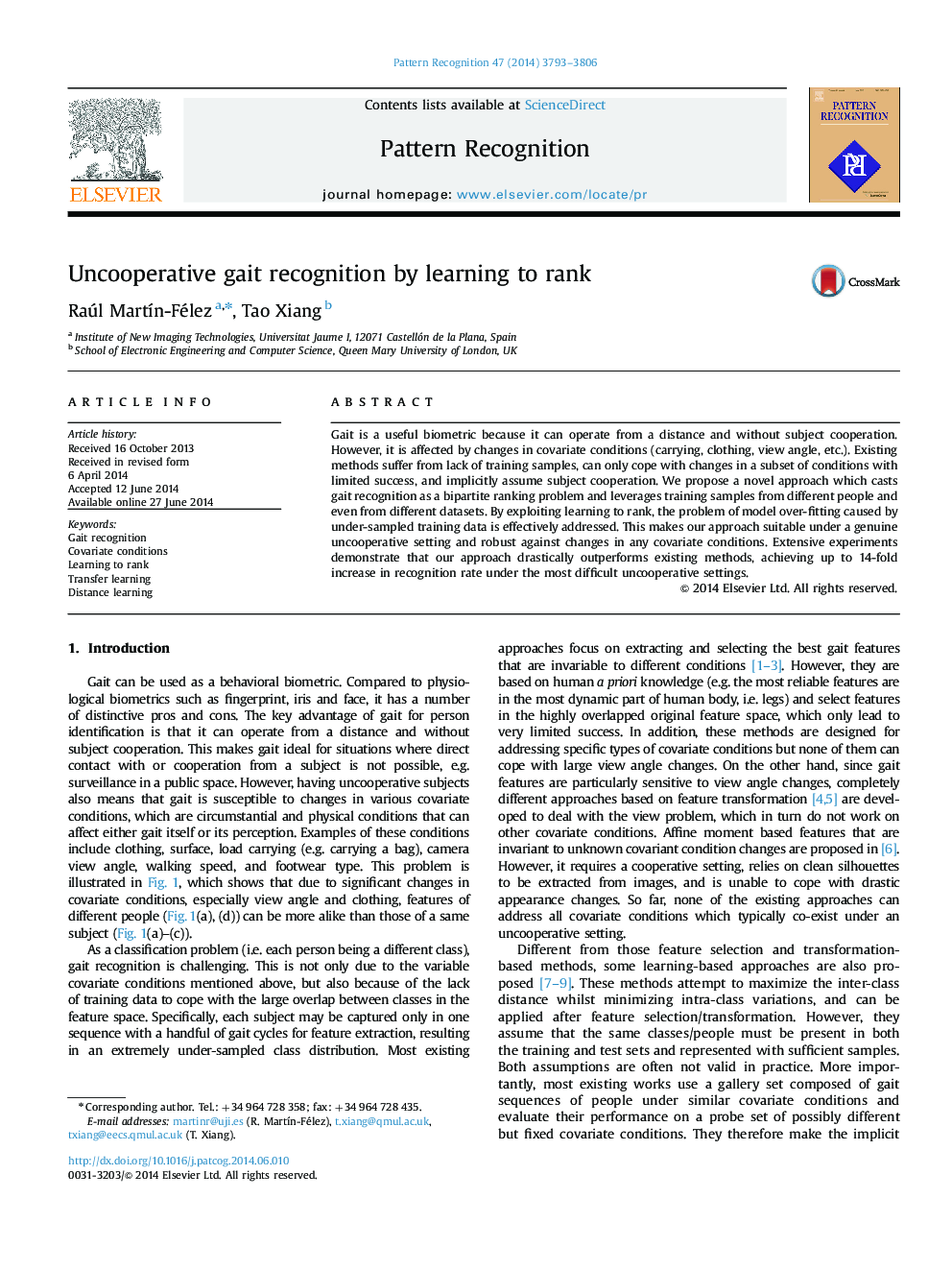| Article ID | Journal | Published Year | Pages | File Type |
|---|---|---|---|---|
| 530334 | Pattern Recognition | 2014 | 14 Pages |
•We formulate transfer learning based on a bipartite ranking model for gait recognition.•Invariant features to covariate conditions are transferred across different people.•Under-sampled training data is handled by leveraging samples of different people.•A single model can deal with any covariate condition and combinations of them.•Outperforming other methods especially under challenging uncooperative settings.
Gait is a useful biometric because it can operate from a distance and without subject cooperation. However, it is affected by changes in covariate conditions (carrying, clothing, view angle, etc.). Existing methods suffer from lack of training samples, can only cope with changes in a subset of conditions with limited success, and implicitly assume subject cooperation. We propose a novel approach which casts gait recognition as a bipartite ranking problem and leverages training samples from different people and even from different datasets. By exploiting learning to rank, the problem of model over-fitting caused by under-sampled training data is effectively addressed. This makes our approach suitable under a genuine uncooperative setting and robust against changes in any covariate conditions. Extensive experiments demonstrate that our approach drastically outperforms existing methods, achieving up to 14-fold increase in recognition rate under the most difficult uncooperative settings.
